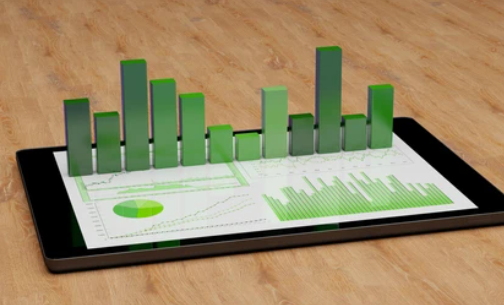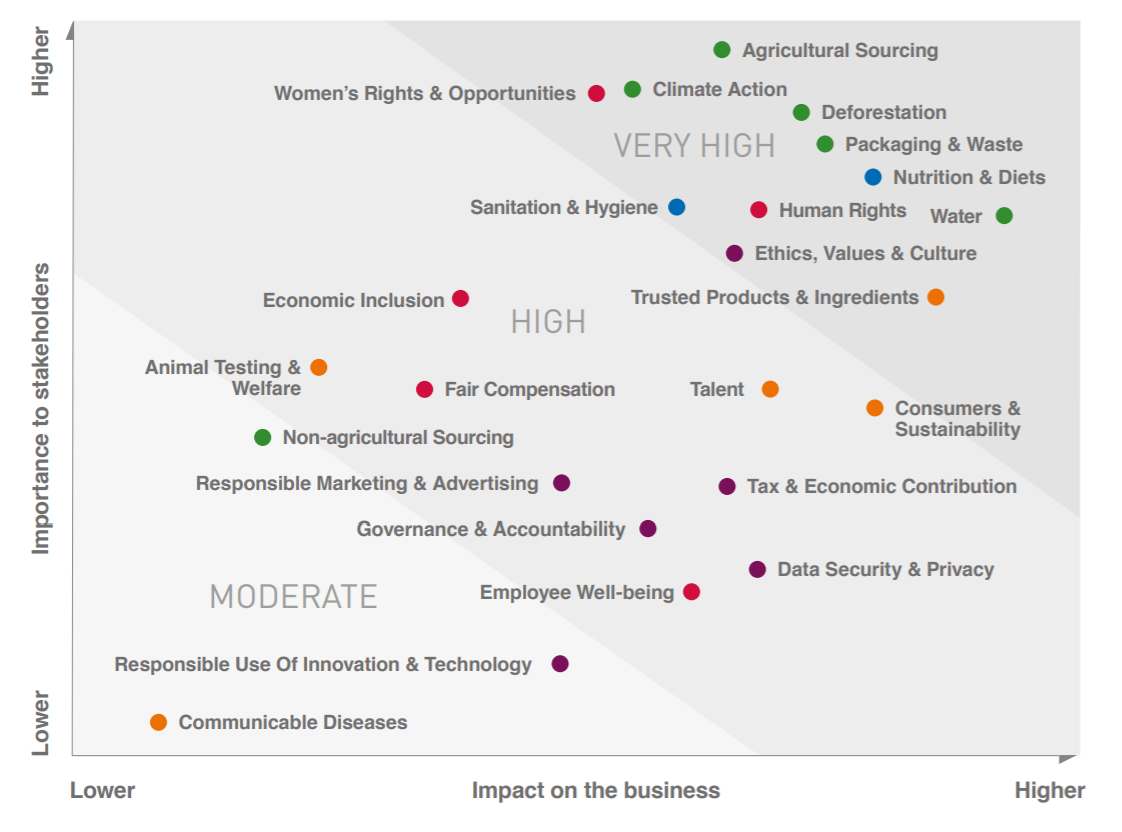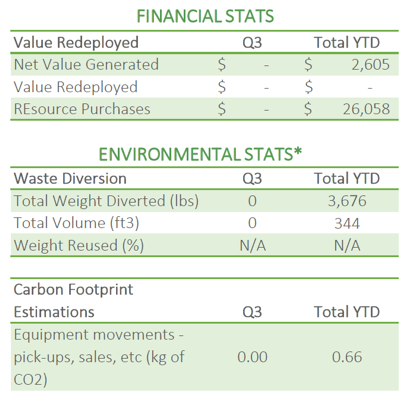Use Sustainability Reporting to Make Clients Love You


Stephanie McLarty is the CEO of Hamilton-based company REfficient, which works to divert discarded technology from landfills through reuse or recycling. REfficient, under Stephanie’s leadership, diverted 517, 960 kg of technology while simultaneously reducing their own GHG emissions. Here, she provides her perspective on the importance of using sustainability reporting as feedback for clients.
When I started REfficient in 2010, I knew that companies needed better tools to manage their unused and obsolete inventory. There was so much product sitting around gathering dust or, even worse, being discarded in the garbage – the absolute wrong place for electronics. So we set out to help telecommunications companies to be efficient with resources—or REfficient – through reuse, resale and recycling. We became an eHarmony of technology, matching products one company no longer needed with others that could reuse them. Over the last number of years, we have diverted at least 65,000 products annually from landfills and into productive reuse.
I also knew that being able to prove green practices through data was paramount to avoid greenwashing or unsubstantiated green claims. As a result, we launched Go Green reports to our clients from the very beginning. They were doing something good for the environment and this was how they could prove it if needed. REfficient’s Go Green reports provided metrics on waste diversion and the estimated carbon footprint on our asset recovery process. But we took it a step further. We made the reports interesting and relatable so that any employee or stakeholder could understand the impact the company was making. It just seemed like a neat and interesting thing to do.
Little did we know this client-facing sustainability reporting would become a key competitive advantage for us over the years. Many clients have loved it and looked forward to receiving the next quarterly report on how they were doing. The reports essentially told a powerful story that could be used both inside the company (particularly their bosses) and externally to stakeholders.
Our Go Green reporting had other benefits too. When REfficient went through the process to become a Certified B Corporation in 2012, we realized we were already tracking a lot of data that we used for certification. We have also used our measures for our reporting to Sustainable Hamilton Burlington, a hub for Green Economy Canada. Our data and storytelling helped us to win the Best Sustainability Report three years in a row.
More companies could be doing this type of sustainability reporting for their clients. After all, this is not something that is unique to REfficient or any single type of business. Certain businesses may naturally have products and services that make this reporting more straightforward, but it is worthwhile for any business to consider the environmental, social, and economic impact of the work they do and how this benefits their clients.
Here is a four-step process to get started launching sustainability reporting for your clients:
1: Figure out what’s meaningful
If your company was going to do a full sustainability report, the first thing you would likely do is a materiality assessment. A materiality assessment looks at what issues are important to you and your stakeholders.

The same principle should be applied for client-facing sustainability reporting. What issues are important to our clients? In what areas do we produce an impact, whether positive or negative? Do our clients do any reporting now? If so, on what?
The best approach is to talk to clients and get their insights. At REfficient we knew we could track waste diversion rates, as our process helps keep the product out of the landfill and even recycle when possible. After talking with one large customer, we discovered they were reporting publicly using the Global Reporting Initiative, or GRI, standards. We looked at the GRI indicators in the area of waste diversion and cross-checked the definitions. We confirmed that our measure could be used for the given indicator, which made our data plug-and-play for our client. Nine years later, this client still relies heavily on us for their sustainability reporting and overall environmental governance.
Once you have compiled the meaningful issues, select your top areas to measure and report on. I recommend three to five measures if you are producing a value-add report.
2: Set up processes to collect the data
Now that the measures are chosen, the next step is to set up mechanisms to collect the data. This is key to success.

Keep it simple. The ideal method is to integrate any new data collection with what you are already doing. If the processes to get the measures are cumbersome or extraneous, you run the risk of it not getting done, or done in time.
Technology can help with this considerably. REfficient developed a software platform to manage our products and be a sales channel to match equipment with companies that can reuse them. We also integrated a sustainability calculator into the platform, which pulls weights, volumes and distances from the shipments. This information is compiled for our Go Green reporting, making it easy to complete our reports.
Whatever your business does, take a look at what you are already doing and how you can integrate the necessary data collection into your existing processes and software.
Finally, make sure someone has ownership over this area so the job gets done.
3: Make the reports useful and relatable
Now comes the fun part – designing the report.
In an age of information overload, I recommend producing a simple one- or two-page report that is easy to replicate for future reports. After all, you will likely do these reports on a regular basis, not just once.
Focus on what matters most so you ensure your report gets read. We list three key measures and track their progress over the year as data points.
But don’t stop there. The key to making these reports useful and enduring is to make them relatable to anyone who reads them. For example, I could tell you that your company diverted 1000 cubic feet from landfills. The response I normally get is “great… I think?” It is hard to know how much 1000 cubic feet is. But now I tell you your company diverted the equivalent of a ryellow school bus full and I show you a picture of a school bus. Now you get it!
These equivalencies are what clients love the most. The following is an example.

Lastly, how often should you report? We report quarterly, or unless otherwise agreed with a client. We find quarterly reports an optimal time to see results and have a non-sales touchpoint with clients.
4: Brainstorm other ways to provide value with the data
Once you start this process, you will probably discover many other ways to use the data to provide value.

We started hearing from clients that they used the reports in a variety of ways, such as in an internal memo to employees, as good news in social media, and on their website to show environmental performance. We compiled this feedback and produced a quick guide for new clients on ways to use the reports.
REfficient also created an annual Waste Diversion Champions program around Earth Day. This program highlights companies who have met certain thresholds – it is like winning an award. Our clients love this celebration for two primary reasons: the recognition and good news content for social media.
You may be able to charge for more detailed reports and services. We have had clients come to us and ask us to help them set up a similar program internally, as they realized this was a powerful tool but they didn’t have the know-how to start. So you may find this path leads to a new business opportunity.
The possibilities are endless.
I encourage you to explore this path as a client relationship building and retention strategy. Do you want to know what the worst thing is that has happened from our Go Green reporting? We hear nothing back from a client after sending a report. That’s it. Usually, we receive a positive, enthusiastic, even raving review.
We have always found this extra effort has helped REfficient stand apart from the competition and be worthwhile. After all, these reports demonstrate that you care, leading to deeper, more committed client relationships as a result.














